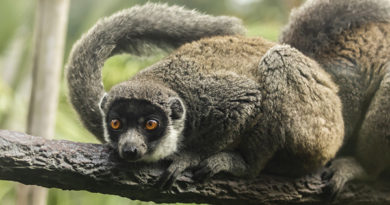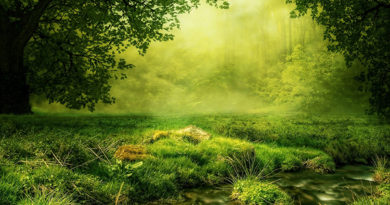The Sami Reindeer Herders of Lapland
Each summer, hundreds of thousands of reindeer and their herders, known traditionally as bozaovazzi (reindeer walkers), start their annual migration down from higher elevations to lowland tundra in the far north of mainland Europe. The reindeer have spent the warmer months feeding on sedges, herbs and grasses, but as the weather cools they head for more sheltered climates, where there is less snowfall and they can dig for lichens and fungi with their hooves.
The reindeer migration is a thousands-of-years-old tradition among Sami, the approximately 80,000 indigenous people who reside in the upper reaches of Norway, Sweden, Finland and Russia in a region collectively known as Lapland. Descendants of northern Europe’s nomadic peoples, Sami can trace their roots back to the end of the last Ice Age, about 10,000 years ago. Reindeer herding has long been a way of life for them, and many Sami herders still make their living from selling reindeer. They spend months moving their herd in cold, often sub-zero temperatures, and bedding down in lavvu, traditional and temporary tipi-like shelters made from poles of spruce wood and covered in reindeer hides. In the Sami culture, reindeer are sacred: an animal that is essential in nearly every aspect of living, from feeding bellies to keeping warm.
Lapland, or Sápmi (the preferred Sami name), is the traditional homeland of the Sami people. This is a place where snow falls on average 200 days a year, and in area’s like upper Finland, the skies are dark enough to catch the aurora borealis, or northern lights—electrically charged sun particles colliding with earth’s atmosphere in a brilliant display of green and yellow spirals, rays and curtains dancing across the sky—from late August to April. One Sami legend is that the aurora is caused by a magical fox running across the Arctic valleys and sweeping its tail across the snow as he goes, leaving a trail of drifting sparks in his wake. In fact, the Finnish word for this spectacular light show is revontulet, which means “fox fires.”

Sami Cultural Heritage
The Sami people are well-known for their connection to, and knowledge of, the land on which they reside. Their traditional cuisine includes local fish, reindeer (bidos, or reindeer meat stew, is a beloved Sami dish), and wild berries such as lingonberries and cloudberries, the latter of which has long provided them with essential vitamins, including vitamin C. Mountain sorrel and angelica, or wild celery, are also readily available and provide substance.
Along with reindeer herding, the Sami’s rich cultural traditions include duodji, or handicrafts, artisan goods that directly tie in to their need for survival in such a harsh environment. Things like woven birch baskets, hand-carved drinking cups, and felted lambswool in the form of hats and slippers. There’s also joik, a form of vocal expression that’s often spiritual in nature and reflects a person, animal or place. It’s typically performed through a series of melodies, rhythms and gestures. When it comes to language, the Sami have more than 200 words just to describe snow and ice, and there are currently 9 living Sami languages.

Threats to Sami Culture
With the Arctic warming four times faster than the global average, ice in the world’s upper reaches is melting at an all-time high. This is the same ice that polar bears depend on to hunt and breed, and walruses utilize for feeding and resting. Climate change is also wreaking havoc on the Arctic’s human inhabitants, particularly the Sami, who depend on their intricate and harmonious relationship with nature to thrive.
In fact, the Sami’s rhythm of daily life is based on an annual calendar of eight seasons: the traditional spring, summer, fall, and winter, interspersed with four “half-seasons”: early-summer, late-summer, early-winter and late-winter. A rapidly fluctuating climate is already showing dastardly effects on this rhythm—one example of which is a change in the consistency of snow. Rather than a fluffier layer that reindeer can dig through, these new weather patterns are leading to hardened ground layers of snow and ice. Unable to easily break through this type of surface, reindeer are spreading out further and further in search of their food, and bringing their herders along with them.
The land that Sami peoples have inhabited for so long are also seeing effects from industries such as logging (many reindeer herders depend on forests for their deer to graze) and mining activities, which can have negative impacts on everything from reindeer herding lands to the quality of water in salmon-filled fjords.
In efforts to protect their homeland and its biodiversity, as well as their livelihoods, the Sami often pursue political actions against laws and businesses—those negatively impeding on the places that they’ve nurtured and safe-guarded for so long. Without proper protection, it can all be lost: the Sami’s vast ecological knowledge that’s so intricately tied with the land, reindeer herding and the traditions, foods and spaces that go with it…. Everything.

How to Go to Lapland
Nat Hab’s Aurora Quest: To the European Arctic by Luxury Train sheds light on this distinct and unparalleled culture, traveling across the Arctic Circle to experience the Sami way of life first-hand. Both the 10-day Northbound and Southbound itineraries of this breathtaking private railway journey spend ample time in Lapland, beginning (or ending) with a stay in the remote village of Inari, the hub of traditional Sami culture in Finnish Lapland. Here, you can immerse yourself in Sami life, learning about the history and customs of Europe’s oldest culture. Visit a reindeer farm and meet an actual herder, dine on traditional Lappish foods and enjoy time pursuing the Siida Museum and Nature Center, an indoor/outdoor museum that serves as a window into Sami culture, as well as a central meeting space within the local community.

What to Do in Lapland
Along with delving into Sami Lapland culture, you can experience a true Finland winter while partaking in an incredible outdoor wonderland, from dog-sledding and snowshoeing to seeking out the northern lights and exploring far-flung Lapland villages, and more.
Get to know Pasvikdalen, a river valley wedged between Finland and Russia that also happens to be home to Norway’s largest population of bears, and contains large swaths of pine and birch forests. Or catch the illuminating glow of the aurora borealis through the glass roof of a wilderness cabin. You can even cozy up in thermal sleeping bags for a night in the legendary Snowhotel—a lodging built entirely of snow and ice—in Kirkenes, Norway.
Of course, there’s always the opportunity to shop for Sami handicrafts—symbols of a remarkable and enduring culture that, with proper protection, will be able to thrive for many more years to come.
About the author: Laura Kiniry View all posts by Laura Kiniry
Laura Kiniry is an award-winning journalist specializing in nature, travel, and the outdoors. When she’s not out traversing Norway’s southern fjords or tracking elephants on foot in Ghana, you can find her at home in San Francisco, writing about her adventures and rediscovering her own backyard.




